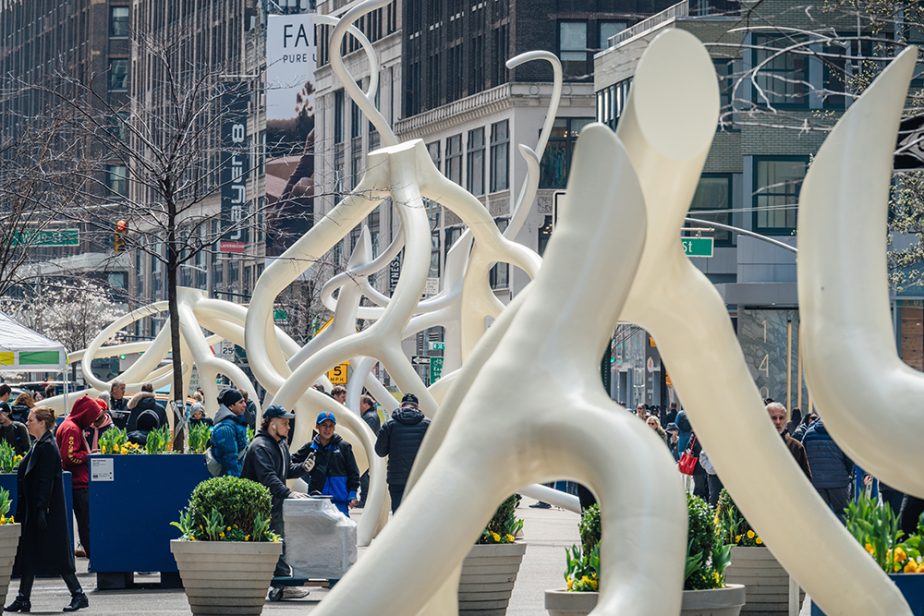
Artists’ Tributes to the Great Migration: Monumental Works Honoring a Historic Journey

Artistic Legacies of the Great Migration: Expansive Narratives in Chicago Exhibitions
The Great Migration, one of the most significant demographic shifts in American history, transformed not only the cultural and political landscape of the United States but also the trajectory of African American art. As over six million Black people relocated from the rural Jim Crow South to cities in the North and West between 1916 and 1970, their stories, struggles, and dreams shaped an enduring legacy now being honored in powerful, large-scale visual art exhibitions in Chicago.
Today, two dynamic shows — Regina Agu: Shore|Lines at the Museum of Contemporary Photography (MOCP) and A Movement in Every Direction: Legacies of the Great Migration at the Chicago Cultural Center — explore this migration through immersive installations that blend history, memory, geography, and creative expression.
Regina Agu: Shore|Lines — Interweaving Landscapes and Legacies
In Shore|Lines, Houston-born artist Regina Agu delves into the aquatic geographies embedded in the Great Migration story, investigating the watery corridors from the Gulf South to Chicago. The exhibition, on view at the MOCP through May 17, centers around sprawling panoramas printed on translucent fabric. Rather than static snapshots, Agu’s pieces flow across walls like curtains, bending and folding as if to reflect the tidal nature of memory.
Her largest composition, “Edge, Bank, Shore,” stretches 94 feet in length and draws viewers into a collage of digitally stitched views from the Little Calumet River and Lake Michigan. The river, once a route for freedom seekers on the Underground Railroad and later a symbol of industrial persistence, anchors Agu’s exploration of place. Similarly, “Sea Change,” an 80-foot horizon of Galveston’s human-engineered sand dunes, evokes Texas’s complex historical weight, including its association with Juneteenth.
Despite their visual serenity, these scenes are far from utopian. Close inspection reveals signs of environmental neglect and human interference — pylons, refuse bins, and fences — signaling that these spaces have long been contested and transformed.
Complementing these vast installations is “Field Notes,” a collection of 30 smaller photo essays lining the mezzanine, capturing marginalized and celebratory moments such as the Hurricane Katrina Memorial and Black Midwestern families enjoying Chicago’s lakeside in the 1920s and 1940s. These vignettes, drawn from Agu’s research and collaboration with local ecologists and historians, extend the story of Black migration beyond movement — into settlement, remembrance, and resistance.
The MOCP further contextualizes Agu’s work by showcasing archival footage and materials from other collections, such as the South Side Home Movie Project, offering viewers a layered and intimate perspective of Black life along America’s waterways.
A Movement in Every Direction — Monumental Stories Across Time and Space
While Agu’s work elegantly narrows in on waterways and personal research, A Movement in Every Direction: Legacies of the Great Migration takes a soaring, collective approach in the vast halls of the Chicago Cultural Center. Running through April 27, the exhibition features 12 artists commissioned to create new work in direct response to their families’ migration stories.
Organized collaboratively by the Mississippi Museum of Art and the Baltimore Museum of Art, this expansive show captures both literal and imaginative journeys. From Carrie Mae Weems’s incisive photography to Mark Bradford’s mixed-media works, the diversity of format and style mirrors the multiplicity of Black American experiences.
Standout installations include Robert Pruitt’s “A Song for Travelers,” an almost mythic charcoal drawing depicting a futuristic Black family reassembled across generations, suggesting not just migration but imaginative time travel. Meanwhile, Zoë Charlton’s “Permanent Change of Station” transforms a gallery space into a theatrical diorama combining life-size drawings and cardboard set pieces. Her grandmother’s modest Florida home reappears in an impossible geography — embraced by Asian rice terraces, segregated suburbs, and towering military figures — a reflection on displacement, service, and the surreal landscapes migration creates.
Torkwase Dyson’s minimalist Black portals, built of gleaming glass and steel, conjure Afrofuturist aesthetics, beckoning visitors inside as if entering a vessel for liberation. These pieces feel both spiritual and spatial, inviting journeying as a metaphor for reckoning, healing, and imagining anew.
Intersection of Exhibitions: A Dialogue of Black Geographies
What is remarkable about both Shore|Lines and A Movement in Every Direction is how they invoke geography as more than just setting. Rivers, sidewalks, suburbs, memorials, beaches — all are imbued with layers of Black memory and aspiration. In this regard, the exhibitions are in dialogue with each other, despite being housed in different institutions.
Where Agu’s ghostly textiles mourn and honor overlooked sites of Black environmental interaction, Legacies builds towering, multimedia monuments to familial origin stories, sometimes real, sometimes fabled. Together, the exhibitions illustrate how Black artists are reshaping cartographies —